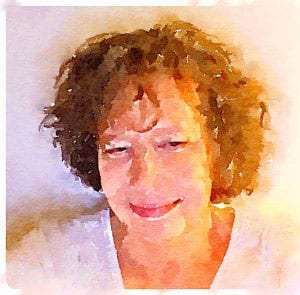Click here to read Part 1 of Theresa’s HAE Diagnosis.
A couple of months later I flew back to Nebraska, got sick on the plane with an abdominal attack at 30,000 feet, and I just wanted to lay down and sleep for a few years, I couldn’t deal with this anymore.
When I got home, I called my doctor because I had not only all the other symptoms of an hereditary angioedema abdominal attack, I also had very sharp localized pain in my lower right quadrant of my abdomen. That usually is a sign of appendicitis. She told me to go into the ER and have labs and a CT scan with contrast to rule out appendicitis and strictures.
The CT scan with contrast showed that I had a near complete obstruction of the bowel because the bowel wall swelled due to hereditary angioedema. I went home thinking “Well at least I don’t have appendicitis.”
My doctor called me the next morning and said she was thrilled to get that test result, because it is a classic hereditary angioedema finding, and now it is virtually impossible for insurance companies to deny treatment.
Fast forward a couple of more years and my husband flew in from the East Coast, and told me he would never move to Nebraska, that we would never live together again. He was angry about my illness and how much this all was costing him.
I saw an attorney a week later and filed for divorce.
This disease has cost me a lot. I lost my husband, my lovely home back on the East Coast, and through the divorce I am losing my house in Nebraska, and my car because I can no longer afford them. I am 70 years old now, and I have nowhere to live. I am looking for somewhere to live with people my age, but most of those apartments are very expensive. But I will keep looking.
And I will keep advocating for research into better diagnostic testing, better care from emergency room and hospital medical staff, and access to medications for all patients, all over the world.

About the Author:
Teresa has a Masters Degree in Psychiatry worked as Federal Research Compliance Officer, before having to retire due to her rare disease. She has lived on the East coast as well as in the mid-west, and has become an advocate for HAE patients across the nation and in other countries. A grandchild also has a separate ultra-rare genetic disorder, and she supports research, advocacy and social awareness for the rare community.





